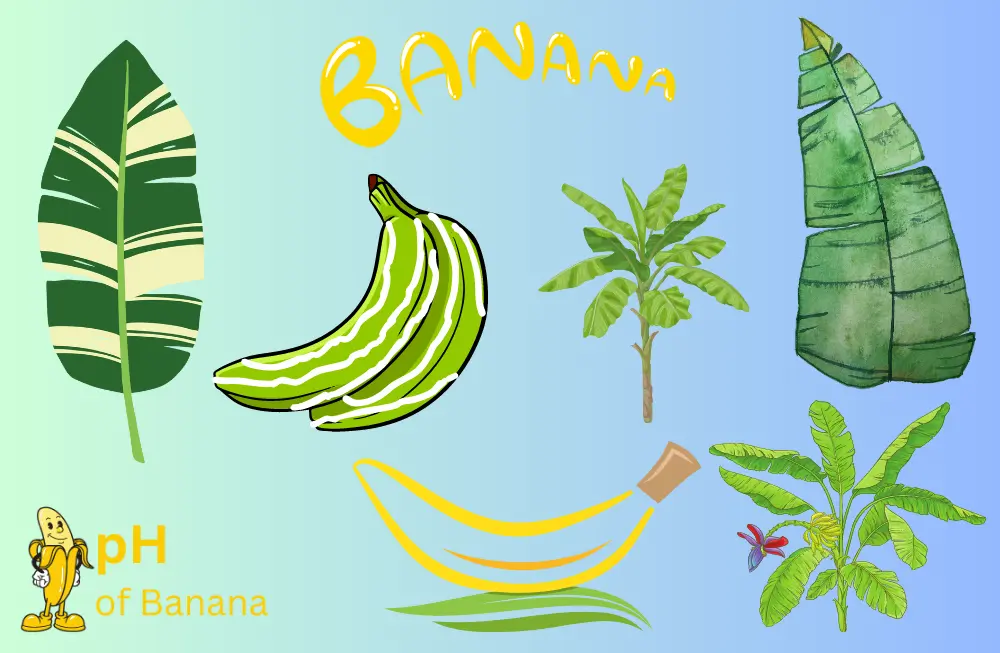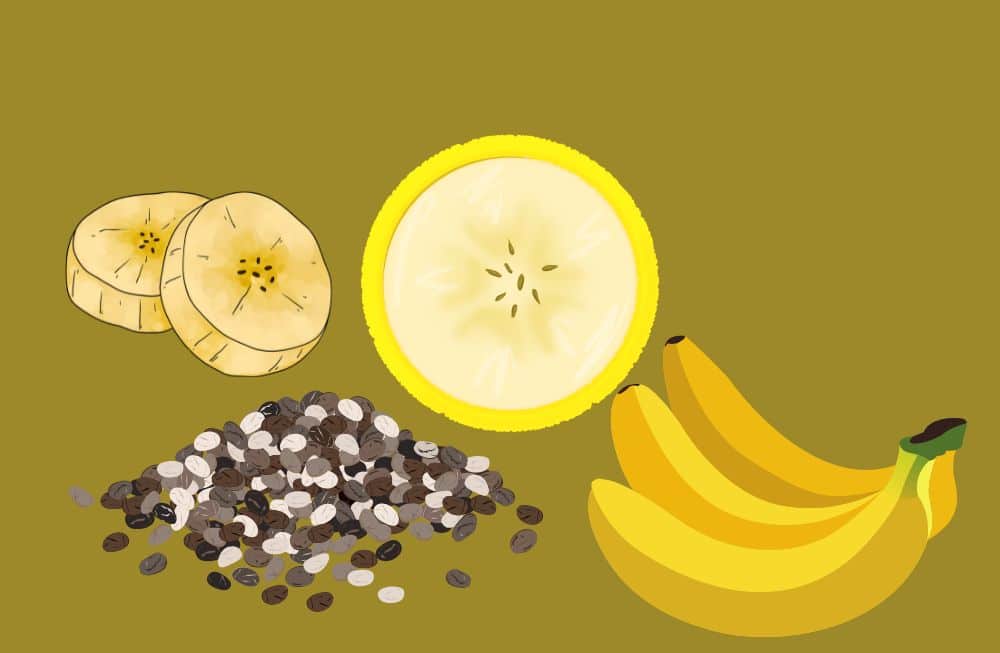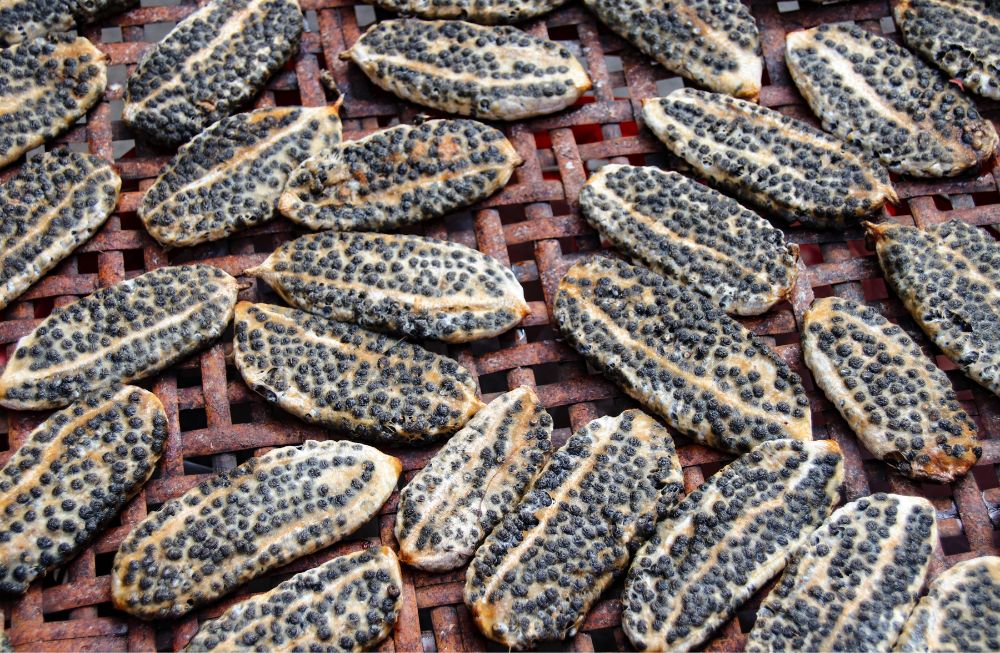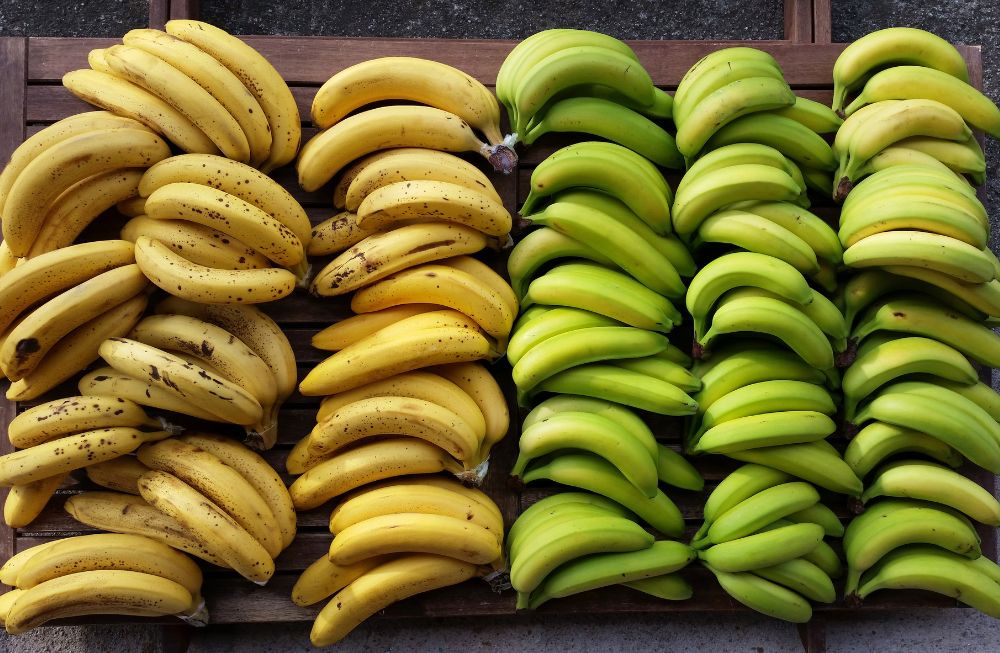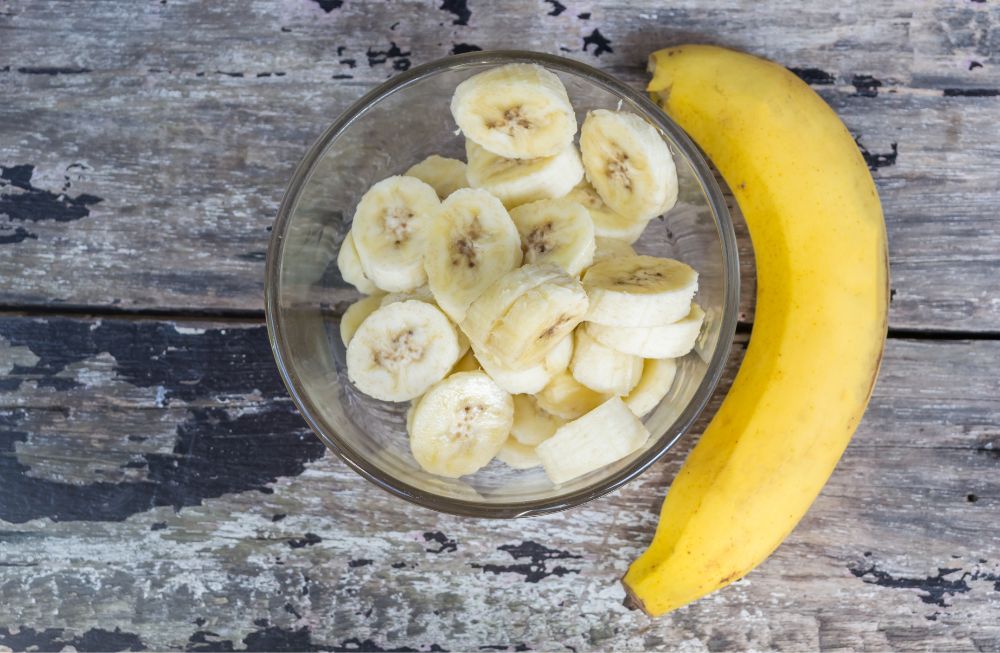We are all familiar with the Yellow Banana Plant, but are we familiar with the Variegated Banana Plant?
Oops! I am hearing this name for the first time! Amazingly, there are more than 1,000 different kinds of bananas to choose from. In fact, the multicolored banana tree gives rise to one of the less well-known kinds.
So, today in this article we will know about what is a variegated banana plant with its characteristics and how to take care of this type of plant.
What is a variegated banana plant?
Variegated banana plants also go by the names Dwarf Hawaiian Variegated banana, and their leaves and fruits have unique stripes that come from a genetic mutation that causes color loss.
This special banana plant can be recognized by its large leaves, which are striped with white and green. Its name comes from these stripes, which are called “variegations.”
The leaves grow from a fake stem called a pseudostem, which is made up of tightly packed leaf sheaths that are about to burst out.
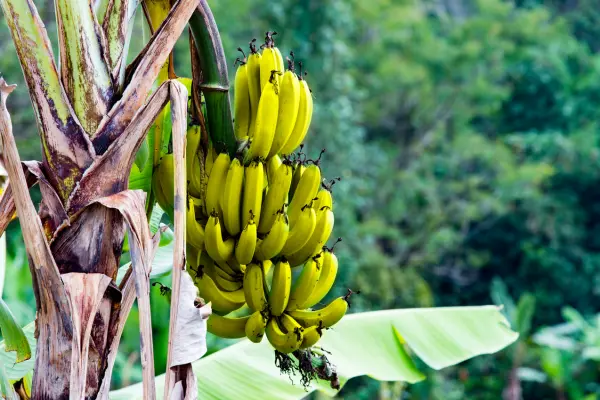
These beautiful plants are known for how well they look and can be grown both inside and out. They will grow just as well in the ground or in a pot or other structure.
If you grow these plants outside, they can get up to 15 feet tall, but they will stay smaller if you keep them in the same pot.
Even though they are tough plants, variegated bananas do best in places that are safe from wind.
| Details | Variegated Banana Plant |
| Species | Musa x paradisiaca ‘Ae Ae’ |
| Family | Musaceae |
History of variegated banana plant
Banana trees have changed over time. Historians think that the first banana trees grew in Southern Asia and the islands of the South Pacific and when farmers and tourists found bananas, they took them to Florida, the Hawaiian Islands, and other tropical places. They became very famous in Hawaii, where they are called Musa ae ae.’
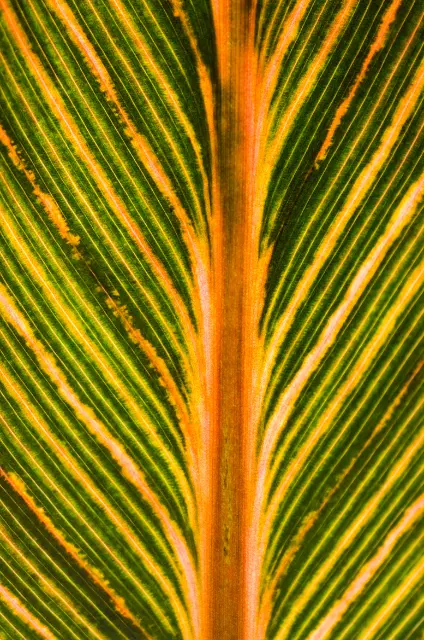
At first, only the most powerful people in Hawaii were allowed to eat this rare treat. Now, anyone who has the money can get one.
What makes a variegated banana plant unique?
The variegated banana plant has similarity to the regular banana tree, so it looks a lot like the regular banana tree. It has a tall trunk and wide, soft, white, and green leaves that change color.
The full height of the plant is between 9 and 15 feet. The tree has a stem that grows underground called a corm or rhizome, and it also has a side shoot called a sucker.
New banana plants grow from these shoots. The pseudostem is the main stem of the banana plant. In the summer and spring, the plant might have pink or red flowers with petals that curl around each other.
If you want the multicolored banana tree to have flowers, you must give it the right conditions to grow, such as high temperatures and a lot of light. After 3–4 years, the plant might have fruit.
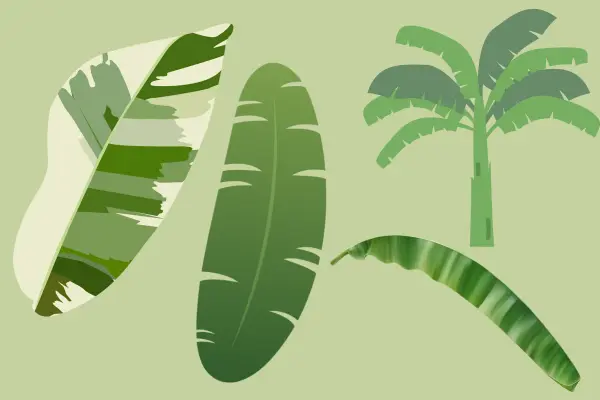
The bananas that the multicolored plant grows usually have bands of light and dark colors, but when they are ripe, the green stripes fall off.
What does a variegated banana taste like?
Bananas with different colors can be eaten raw or cooked. They can also be added to casseroles, stews, stir-fries, soups, and salad dressings.
When fruits are ready, they turn a light yellow color and taste sweet.
The inside of a variegated banana is the same familiar cream color as the Cavendish banana, but the skin of the variegated banana may also appear slightly orange. When it is uncooked, the flesh has a solid texture and a flavor that is moderate but sweet. When the flesh is cooked, the texture becomes more tender and the sweetness is enhanced.
What are the health benefits of having variegated bananas?
Because they are so uncommon, most people have never seen or tasted a variegated banana and wouldn’t be able to identify it if they did. Even if they did consume one, they wouldn’t know what benefits it would bring them.
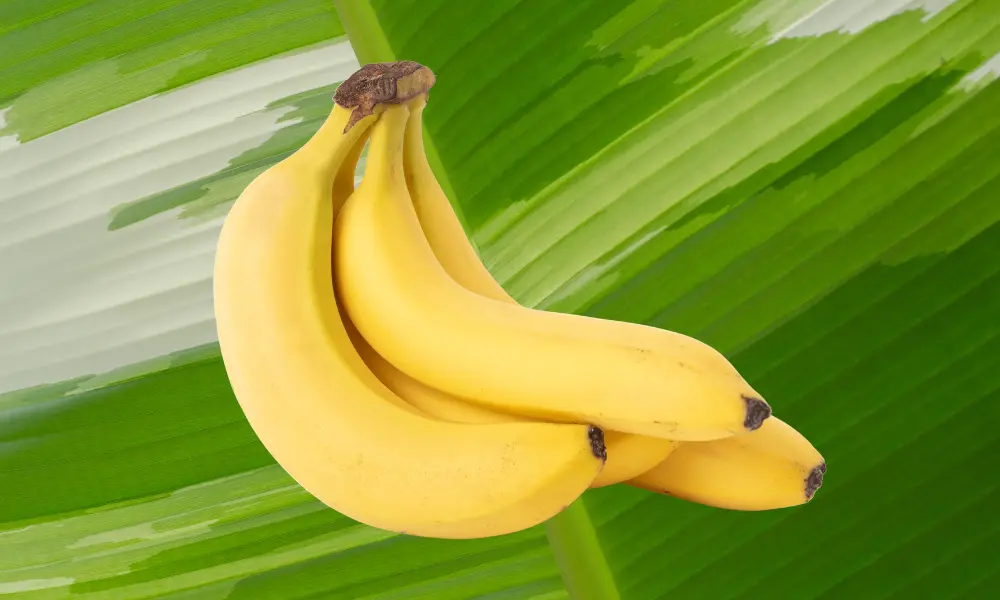
The health advantages of variegated bananas are comparable to those of other types of bananas, despite the fact that they have a distinct appearance. Potassium, magnesium, folate, antioxidants, and vitamins A and C are all abundant in them. They are a wonderful source!
If you include bananas in your diet on a daily basis, you will see improvements in the health of your muscular, neurological, cardiovascular, and immune systems. Additionally, your bones will become stronger, you will have more energy, and your mental health will improve.
Are you thinking of ways to eat this type of banana? Then look into it carefully.
How to eat variegated bananas?
When you get some different-colored bananas, you will have to decide what to do with them. We have a few ideas for recipes that you can follow and try at home.
Blueberry Banana Bread
Blueberry banana bread is a delicious addition to your day, whether you want it for a snack, breakfast, or dinner. If you use your different-colored bananas to make blueberry banana bread, you’ll get a delicious mix of tart and sweet flavors. You can mix all the ingredients in one bowl because the recipe is so quick and easy.
Icebox Pie
With its cool richness, icebox pie is a great dessert to have after any meal. The peanut butter banana icebox pie is a great example of this. When you mix the smoothness of peanut butter and bananas with the crunch of graham crackers and the richness of chocolate, it is an experience you will never forget. This is especially true if you use the fruit from a banana tree whose fruit has different colors.

Ice cream
Do you like ice cream? This recipe is going to be my favorite one.
Different-colored bananas can make you love them even more. For a tasty treat, get an ice cream maker from Amazon and mix the mashed bananas with sugar, eggs, and heavy cream. For crunch, you could add chopped hazelnuts, almonds, macadamia nuts, or walnuts.
Granola
This is a great choice for snacks or sides because it is healthy and filling. Bananas in different colors are the only thing that could make nut granola taste better and be better for your body. You can also use granola to make muffins.
How can you buy a variegated banana plant?
If you want a variegated banana plant, you might be able to buy one at a gardening shop. Check out Home Depot or a nearby garden center. Moreover, you can also look at online stores where you can find this plant.
But if you want to buy any plant, especially a rare plant that is hard to find, then you must know how to take care of it properly.

Now, as you have a deep knowledge of such a type of uncommon plant you should also know how to take care of it. Well, I am super excited to know as this is something that I did not have any idea about.
What are the steps for caring for a variegated banana plant?
You can grow a multicolored banana plant both outside and inside. If you’re growing these plants outside in your yard, make sure you put them somewhere that drains well.
Do not put it in a spot that is too close to a water source, like a stream. They need soil that drains well, regular watering, and a lot of sunshine to grow indoors.
The steps for taking care of a variegated banana plant are given below:
Step 1: Light
Since these types of plants come from tropical areas, it is very important to get the right amount of light and temperature when growing them.
They are like half-shade to the full sun when it comes to light. But when they are in the sun for a long time, it shouldn’t get so hot that the leaves get burned. If this happens, you need to move them to a place in your house or yard with more shade.
Keep in mind that the variegation will also turn brown if it gets too much sun.
If you are growing the plant indoors, you should put it in a window that faces south. During the summer, you can put the plant outside.
Step 2: Watering
One thing that is true about banana plants is that they are plants that require a lot of water.
Banana plants with variegated leaves grow when given plenty of water and soil that is somewhat moist. However, in order to avoid root rot, it is essential to ensure that your banana plant does not receive an excessive amount of water.
You need to discover the sweet spot that allows the soil to be moist without becoming soggy. You can check the moisture level of the soil with your finger to determine if it has dried up completely, but it is recommended that you wait until you notice the leaves beginning to fall off a bit before watering again.
Because they are so receptive to humidity, we suggest that you mist the leaves on a consistent basis.
Step 3: Temperature and Humidity
Because they are native to tropical climates, variegated banana plants do best in environments with high relative humidity and temperatures ranging from 68 to 85 degrees Fahrenheit. Because the plant cannot withstand the cold, it needs to be moved indoors well before the temperature starts to drop.
When the plant is brought inside, it should be kept in a location that is cool, dry, and has plenty of air circulation. If you cannot find a location that is both dry and cool, then you should keep the plant in such a place that it is close to a door or window that you can keep open to let the air come in.
Keep the humidity levels between 50 and 60 percent at all times. You can boost the humidity in the air around the plants by manually misting them with water when the temperature is low.
Step 4: Soil
From how often they need to be watered, we can see that variegated banana plants like soil that is moist.
But they do not like to sit in muddy dirt, so it is also important that it drains well. If you want to grow them in pots, then you are suggested to use rich, loamy soil that has been aerated with perlite and put the plant in a pot with a drainage hole.
If you plant them outside, we suggest putting mulch around them to keep the dirt moist.
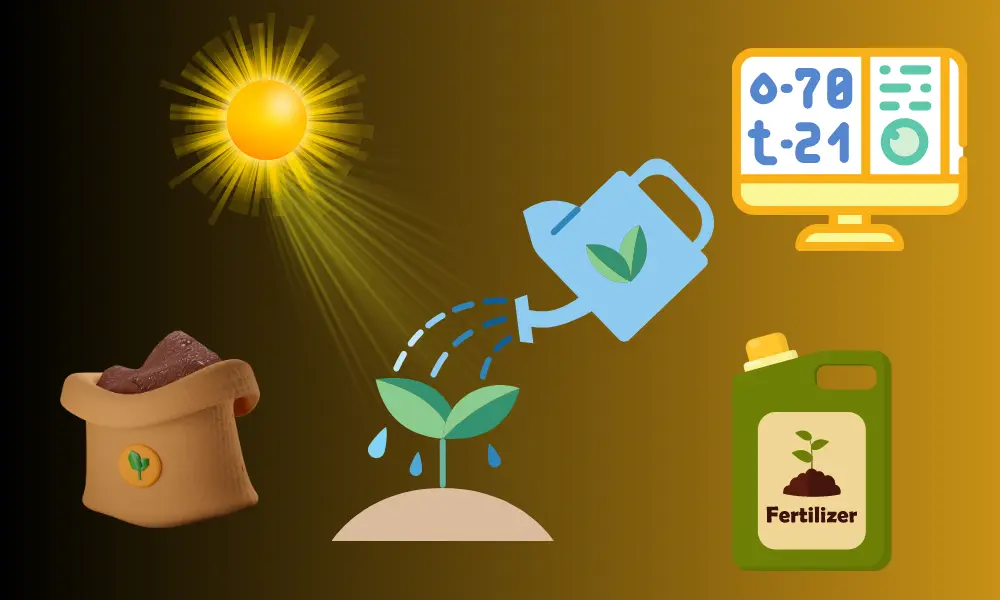
Step 5: Propagation
Once you have one of these beautiful plants established, it makes sense that you will want to make more of them. Banana plants make it easy to do this.
No matter how big the mother plant is, it will finally make pups, which are small banana plants. All you have to do is cut these off with trimming shears and put them in a small pot so they can grow roots.
To give your pup the best chance of living, use a pot of the right size with a drainage hole and dirt that drains well and lets air in.
Isn’t it so simple?
Step 6: Fertilizer
Now, if you want this plant to grow well and stay healthy, it needs to be fed regularly. During the plant’s growth season, it is best to give it a balanced fertilizer once every two weeks.
Between fall and spring, when the plant is sleeping, you only need to fertilize it once a month. Every year, mix compost into the earth to boost the number of organic compounds.
Step 7: Repotting
Generally, these plants have a rapid pace of growth and are able to attain heights up to the ceiling. The roots have a propensity to develop rapidly as well.
Therefore, if the plant’s roots are unable to spread further because there is not enough room for them to do so, the plant may stop growing, which is a sign that it requires a larger pot. Repotting this type of plant not only promotes healthy growth but also protects the plant from developing root rot.
Step 8: Pruning
You may achieve an orderly appearance by performing some little pruning on the variegated banana plant. When a plant is grown from a corm, it produces a number of pseudostems; however, it is recommended that only one be kept because the plant will focus all of its energy on developing the main trunk from this single pseudostem.
Cutting the pseudostems that are closer to the topsoil where they are weaker is a good idea. When you observe suckers or small shoots growing from the pseudostem between the ages of six and eight months into the plant’s life, select one sucker to keep and prune the others. After the fruiting season is over, this will take the place of the main stem.
Step 9: Pests
Insects such as scales, aphids, and thrips are common enemies of these plants. Take them off using a cloth or some tissue paper. If the infestation is particularly severe, though, you might need to resort to more drastic measures, such as using insecticidal soap or neem oil.
Nematode and black weevil infestations can also affect the plant, and if the problem is serious, you might need to treat it with insecticides in order to get rid of the pests.
So, yes these are the most important steps to follow when you have a variegated banana plant at your place.
However, these plants are extremely well-liked among people who are passionate about plants, including collectors and hobbyists. But, is it expensive to afford?
Why is the variegated banana plant expensive?
Because variegated bananas are so uncommon in comparison to other species, finding them and purchasing them at a reasonable price can be challenging.
Therefore, yes, the variegated banana plant is expensive to buy.
FAQ
Do variegated bananas taste different?
When it is raw, the flesh has a gritty texture and its color ranges from cream to pale orange. It is firm, and it has a moderate flavor. After being cooked, the young Variegated bananas soften to a consistency that is light, fluffy, and starchy. They also have a flavor that is both sweet and salty.
Does a variegated banana plant produce fruit?
Banana plants, on the other hand, are not as picky as other fruiting plants and will typically bear fruit only when they are outside, where they may reach their maximum potential for growth.
If you are successful in creating the ideal environment for yourplant, it should bear fruit either inside or outside.
Is the variegated banana plant illegal?
No, this is wrong because of something that happened in 2021.
For a short time, parts of banana plants that came from the Philippines could not be sent to the United States because they could spread certain diseases. That rule has been changed.
But they are very limited in Australia, and you need a special permit to trade them.
Conclusion
The variegated banana plant is a must-have addition to your plant collection as it is an eye-catching plant with its huge, beautiful foliage in white, green, and mint colors that looks as if it has been hand-painted and its variegated fruit. It can also improve the tropical atmosphere that you already have going on in your home.
But compared to other plants, these plants are actually easy to handle if you know some tips and tricks that have been discussed above in this article.
Are we now confident to grow this type of tough plant at our place? Well, I hope I can take care of this plant just like a professional man does.

